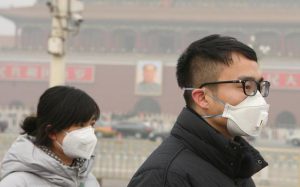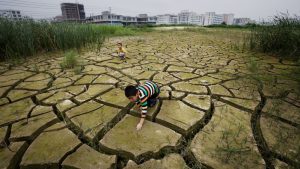Eastern China has recently suffered heavy smog. On December 6 Shanghai’s Air Quality Index (AQI) hit 484, while Nanjing saw a figure of 331 (anything over 150 is classified as ‘unhealthy’). Monitoring stations in other cities in Jiangsu province saw their AQIs cross the 400-mark.
The smog has led to further criticism of the central government’s plans to tackle air pollution. A provincial environmental official who declined to be named complained of feeling universally condemned.
“We’ve been getting any number of calls from the media and the public, some of them very offensive. But in reality there’s a limit to what we can do. If you don’t control things before that, via energy and industrial structure, then just one additional factory will mean all our earlier work is wasted.”
In the Nanjing smog PM2.5 levels were high, but at times PM10 levels also went over 500. Experts say these figures indicate high levels of dust from construction sites.
The official claimed that “the government has ruled that local governments are responsible for air quality, but this involves the interests of different government departments – those approving new projects and so on.”
The environmental authorities said they had suggested to the city government that construction work halt during the smog. But one worker at a site on Jiangdong Road in Nanjing claimed they hadn’t stopped work for a single day. “Never mind a day – we didn’t even stop for an hour.”
Shan Yang, head of the Jiangsu Joint Air Pollution Office, argues that energy and industrial structure are the root causes. “Jiangsu has a high concentration of energy-hungry and polluting firms, and gets a lot of its energy from coal. Even if an individual firm meets targets, the total emissions are still going up.”
According to figures published in the People’s Daily, in 2012 Jiangsu’s emissions of four major pollutants per unit of GDP were about half of the national average – but total emissions were still in the top 5, below only Shandong, Hebei, Hunan and Guangdong.
The anonymous official argued that the environmental problems are mainly a question of economic restructuring.
“The environmental authorities can’t do that on their own. For example the air pollution plan requires coal consumption to fall in 2017 – but if GDP grows, energy consumption is bound to grow with it, and the local governments all want to develop. Jiangsu suggested using environmental protection to assess official performance back in the 1990s but it never happened.”
He gave the example of the building of Nanjing South Railway Station, whose on-time completion was prioritised over any environmental concerns. The construction left large areas of earth uncovered and dust blew all over the city. The city government tried to find a solution with the contractor, but was ignored. “It’s a national-level project, who’s going to take the blame if it’s late?”
This is an edited version of an article originally published in the China Times





